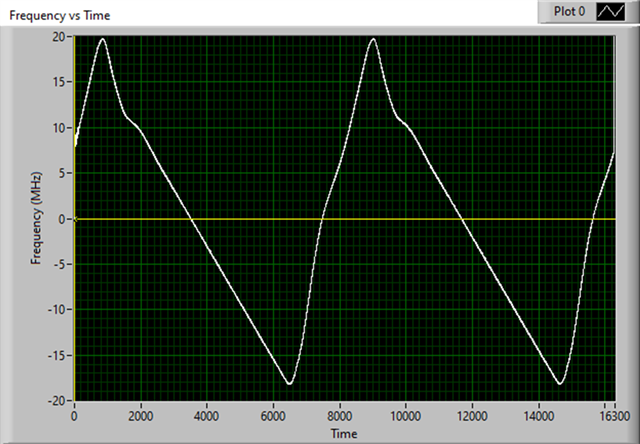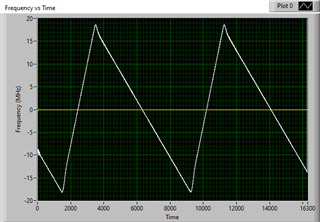I am working with the LMX2572EVM. I'm presently trying to ramp up 36MHz in 144usec (RAMP0), then ramp back down 36MHz in 144usec (RAMP1), then repeat the process (triangle wave)(using automatic ramping).
Is it possible to do this without going through a VCO CAL at the end of each 'triangle'?
According to the datasheet (section 8.1.4.3 Full Assist), I should be able to do a VCO calibration, then read back the VCO_SEL, VCO_CAPCTRL, and VCO_DACISET values, to obtain the set values. However, I have not been able to read back any register values. I've tried all possible settings of the MUXout_SW on the EVM, but can't seem to get any values read back. Is there some other parameter/switch that needs to be set in TICS to read back registers?
Does it sound like I am on the right track for achieving a triangular frequency ramp, without being interrupted by a VCO calibration?
Thanks.
Ed






